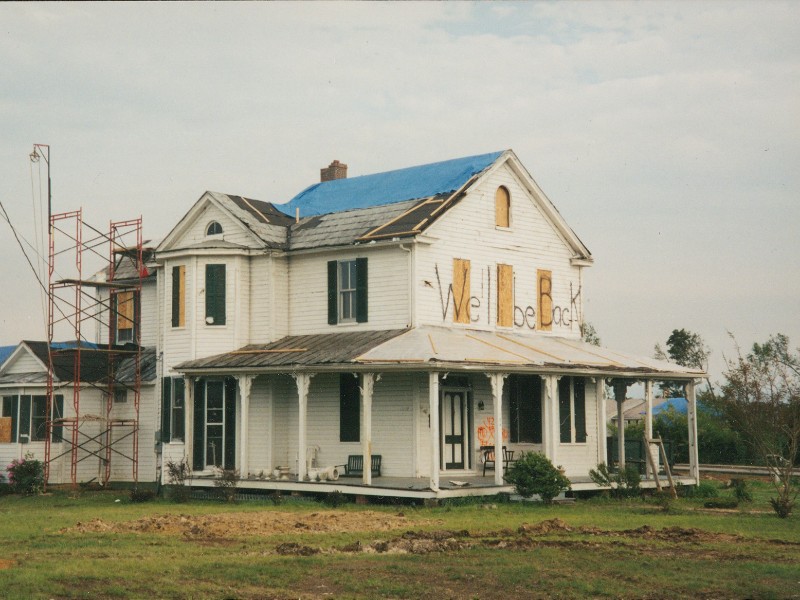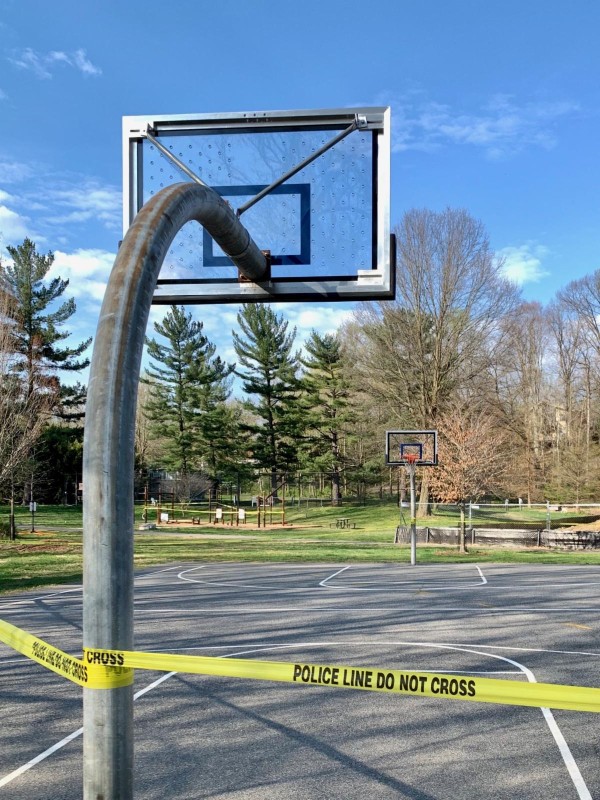During today’s global pandemic, many of us are looking to history, including the Flu of 1918 for context and guidance. One hundred years from now, historians may be looking to understand the impact of COVID-19 on life in Maryland. Here’s how to support future historians and share your own stories through a personal archive:
WRITE TO YOUR LOCAL HISTORICAL SOCIETY
Montgomery History is seeking accounts from residents that document the day-to-day experiences of living and working in the County during the COVID-19 pandemic. The organization’s call for stories, states: “If you are working on the frontlines during the coronavirus outbreak—in the health industry, as a grocery store employee, business owner, nonprofit providing essential services, delivery driver, teacher, scientist, local politician, or otherwise—we would especially love to hear from you, but all voices and perspectives are welcome!”
The Historical Society of Carroll County is requesting that Carroll Countians send in pictures, short video clips and comments of experience as it relates to the COVID-19 health situation. The submission guidelines on their website state, “We understand that the crisis is causing unprecedented challenges, but we are also living through a historic moment that we believe should be captured for the benefit of our community today and for future generations of County citizens.”
If your regional or local historical society is not yet collecting COVID-19 related materials, consider reaching out to them or sharing your thoughts with the Maryland Historical Society. The Maryland Historical Society is soliciting stories through their Collecting in Quartinte initiative, “Inspired by the poignant letters in [our] collection documenting past adversities from the Spanish flu of 1918, to the Annapolis yellow fever epidemics of 1793 and 1800, [the Historical Society] is calling on Marylanders to send their personal stories of how the pandemic is impacting their lives.”
- Basketball court closed during COVID-19. Photo from Montgomery History.
- Visiting a state park during COVID-19. Photo from the Maryland DNR.
INVENTORY AND BACK-UP YOUR MEMORIES
Now is a good time to evaluate your organizational or personal archive. First, gather everything that you can into one location and create an inventory based on file type, major themes, and condition. This will help you determine what items are most at risk and are most important to you to preserve.
FOR INDIVIDUALS AND FAMILIES
Assuming that most photos of friends and family are now digital, here are some tips to start a digital backup and start the archiving process for your digital memories. Cloud options for digital archiving including Dropbox, iCloud, Google Photos, Flickr, and others. Check the capacity of free and paid versions. Gather the photos from all of your devices in the household. Don’t forget to find your old point-and-shoots and transfer the contents of the SD cards to your cloud backup, too. Keep, date, and organize your SD cards – they are good to keep around but should be considered a stable backup. Jump drives and external hard drives now come in sizes, like 2 to 16 Terrabytes that should be big enough for a personal archive. External hard drives should be upgraded just about every 3 years or more often.
Another rule-of-three is this: Keep at least three copies of your most cherished data, two of which should be on different formats, ie. you could have one on your computer, one in the cloud, one on an SD card.
It is also recommended, if you have time, to add metadata to your digital files. You can change the name of the file, or right-click on an image file and add information like date, location, and a quick note. Think of it like writing on the back of a printed photograph. You’ll thank yourself, and future historians, will thank you for this step later.
After this work, have fun and share your photos via a weblink to your friends and family and think about starting a Flickr page for your favorite photos of sites across Maryland.
If your photos are not digital, remove photos and slides from non-archival binders, and move them to acid-free folders or binders. As you’re doing this, think about what photos you definitely want to digitize and set them aside. There are several companies that will digitize your photos and return them to you by mail. You may also want to think about rehousing the archive in a safe or other fire and/or flood-proof location. If you’re in need of more guidance, the Library of Congress has a great primer on personal archiving.
Free Video Resource: Preservation Maryland hosted a conference panel on the future of digital archiving in Maryland and a variety of ways that individuals and organizations can start the process. Speakers included Nathan Avant of the Rainbow History Project, Siobhan Hagan of the Mid-Atlantic Regional Moving Image Archive, and Jason Speck and Anne Turkos of the University of Maryland Archives.Watch On YouTube
FOR ORGANIZATIONS
Whether your organization is a collecting-organization or not, it is important to inventory, backup, and archive your organization’s files. The ideas above for individuals are well-suited for small non-profits organizations, too, but may require paid subscriptions for additional space – or look to institutional-level cloud management services like Egnyte, Dropbox Professional, Microsoft OneDrive, or GoogleDrive.
Additional considerations should be thinking about investing in asset management software like ReDiscovery, PastPerfect, Microsoft Access, Collective Access, or Abobe Bridge. Preservation Maryland uses Adobe Bridge, available as a free download, to process our digital images. The metadata added in Adobe Bridge transfers to Flickr where our partners and the public can search for images for research. Remember, the fewer copyright or Creative Commons restrictions you place on your photos, the better the chance that someone will see, share, and use your organization’s images. For example, both Preservation Maryland and Baltimore Heritage, Inc. have thousands of photos on Flickr available for use.

Former Preservation Maryland intern, Jennifer Wachtel, 2017.
MAKE A DONATION PLAN
For paper collections, contact your local historical society or regional library and start to make a plan for long-term document storage. Creating a local collection that is accessible to the public may be a boon to future researchers. The best thing for the longevity of your collection is acid-free and climate-controlled storage until the collection can be processed and possibly digitized for both preservation and access. For example, the Preservation Maryland collection is held in Special Collections at the Hornbake Library at the University of Maryland and is searchable through an online finding aid.
Looking head, some collecting organizations are currently accepting digital donations, too, like digital photo files, oral histories on digital audio files, and digital movies. Inventorying your digital collection will help facilitate this type of archival donation that is an essential adaptation for archives.
A special thanks for Rachel Rabinowitz, former Waxter Intern at Preservation Maryland and recent graduate of Johns Hopkins with a MA in Museum Studies with a Certificate in Digital Curation for her help on this archiving resource.
VISIT OUR PHOTO ARCHIVE ON DIGITAL MARYLAND
JOIN PRESERVATION MARYLAND TODAY



